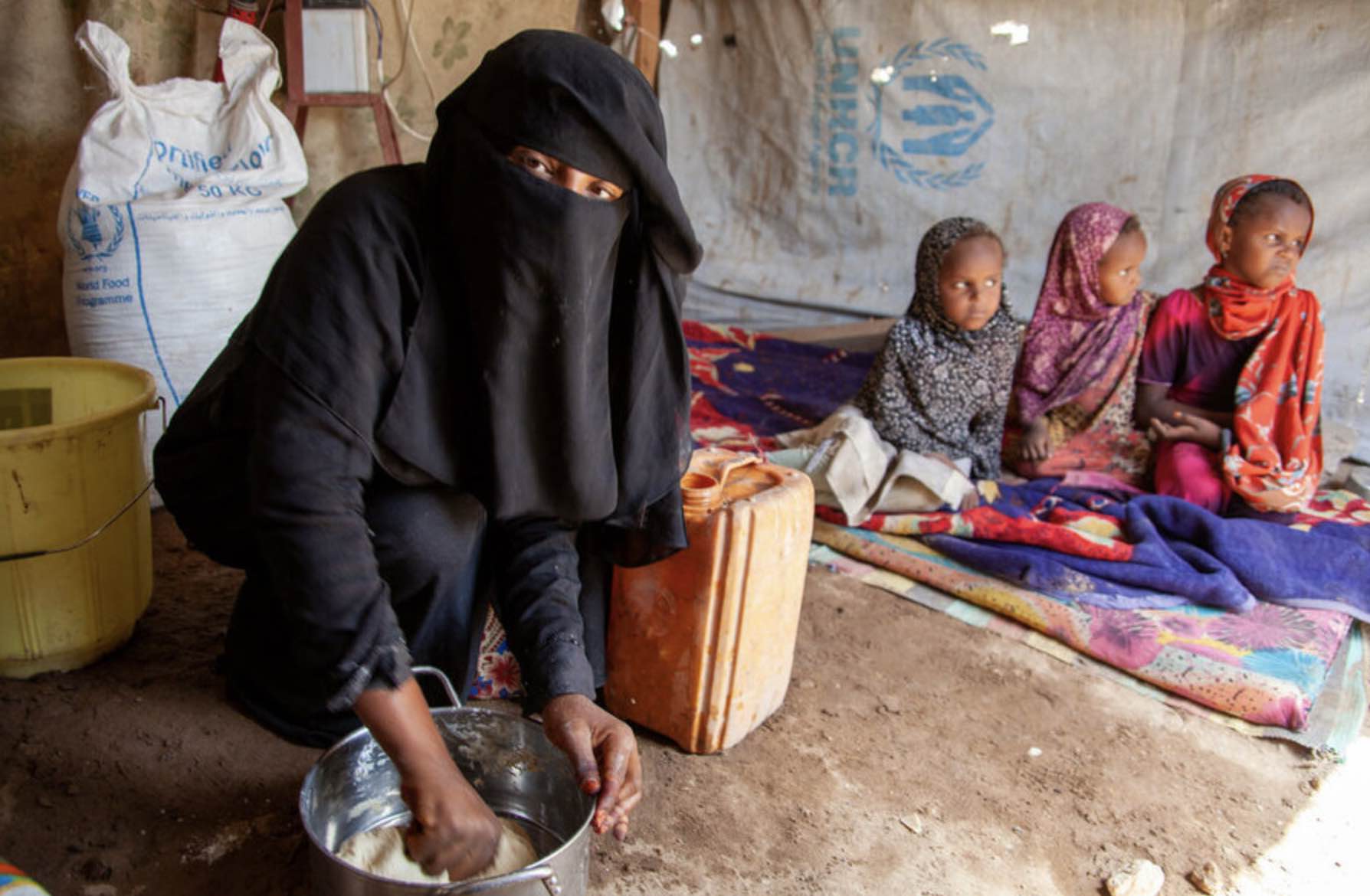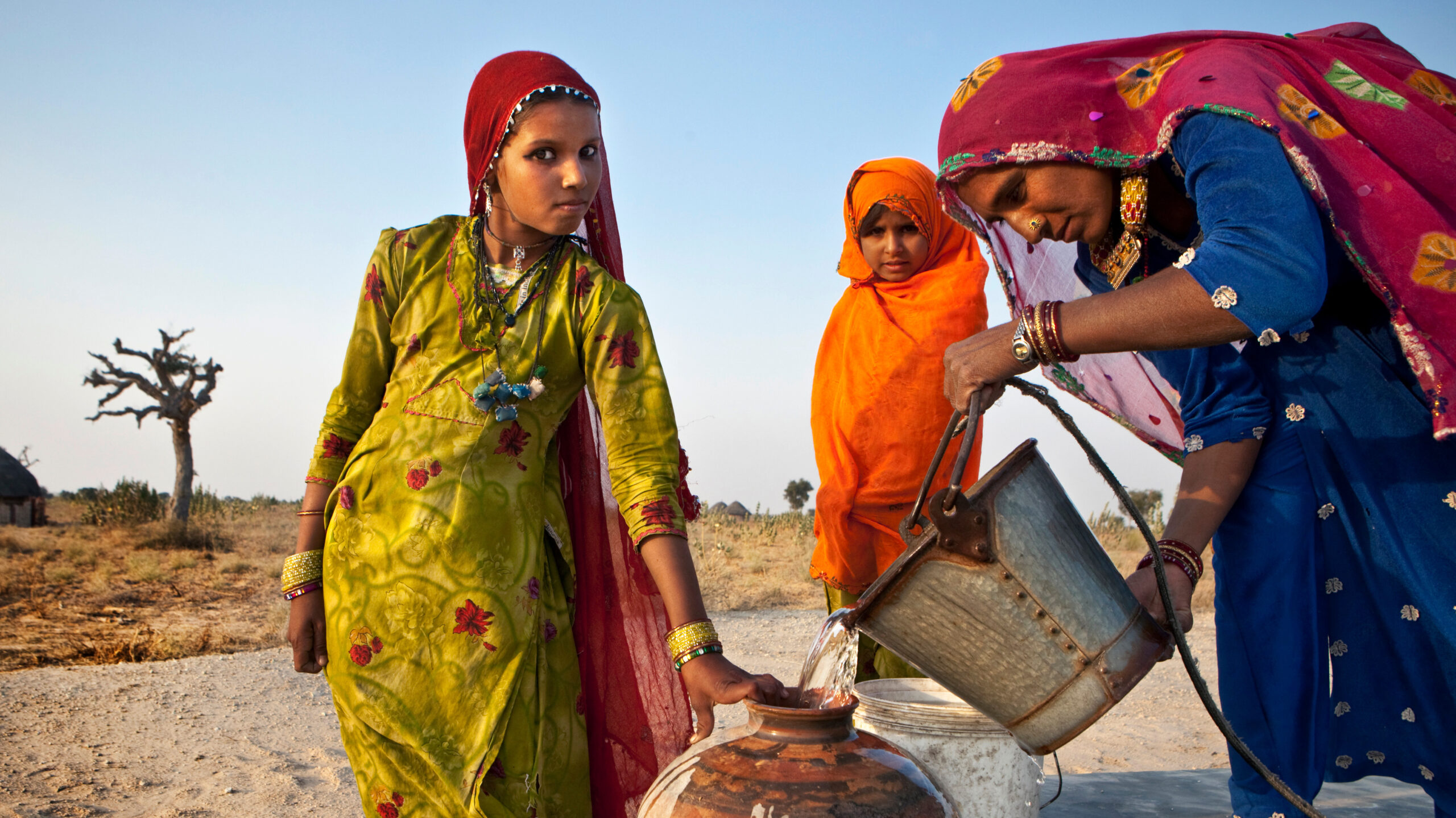Translation option:
The Russia-Ukraine conflict has roiled agricultural markets, particularly wheat, which has seen prices rise by 30% since Russia invaded on Feb. 24. This post focuses on the impacts of the crisis on Yemen, whose poverty, civil war, and dependence on wheat imports from Russia and Ukraine make it uniquely vulnerable to the current market and supply disruptions.
Yemen’s civil war has ravaged the country since 2015, and lately serious impacts from the COVID-19 pandemic have worsened its already precarious food security. The prevalence of undernourishment, as measured by the UN Food and Agriculture Organization (FAO), exceeds 45%, and more than half of the population relies on some type of in-kind food assistance.
As with Egypt and other countries in the Middle East and North Africa (MENA), a large portion of the Yemeni population’s caloric intake consists of wheat products, and the country relies heavily on imports—including wheat and oil—from Russia and Ukraine. The Russia-Ukraine war threatens to exacerbate undernourishment and the reliance on external assistance further by increasing the cost of key food and energy products.
Yemen’s vulnerability to higher wheat and energy prices
Named “Arabia Felix” by the ancient Romans for its fertile lands, Yemen was historically self-sufficient in agriculture. But in the 1970s, wheat imports began to rise as the labor force shifted from predominantly agriculture to migrant work in neighboring Gulf countries during the oil boom, and population growth also accelerated. Other factors contributed to the shift to imports, including a focus on irrigated agriculture reliant on the unsustainable use of pumped ground water, less labor available for maintaining traditional terraces, and increasing commercial cultivation of khat.
The civil war compounded a deteriorating macroeconomic situation: Between 2003-2005 and 2018-2020, total imports rose by over 85% while exports fell by 72% (Figure 1). The total value of imports is now six times that of exports, and food imports alone exceed total exports.
FIgure 1
Yemen today relies heavily on remittances and international aid to supplement local income. While crude oil remains the core exported commodity, the country spent $3.5 billion in average on imported food products and refined oil alone—about 15% of its GDP. This creates a significant vulnerability to rising prices on world markets. While the increase in crude oil prices could help to mitigate this issue, it is not clear if a large share of the population will benefit from it.
Currently, the cereal import dependence ratio for Yemen is estimated as 97% (Figure 2), with Russia and Ukraine accounting for the largest share of wheat and wheat product imports (42%). It’s important to note that MENA countries (the source of 12% of Yemen imports) reexport flour and other processed wheat products made from Black Sea-sourced products. Thus Yemen’s exposure to the current crisis extends beyond its direct imports from Russia and Ukraine.
Figure 2
Yemen’s internal strife
What are the likely impacts to food security as the external shocks from rising prices and supply disruptions of wheat and fuel affect Yemen’s already-tenuous internal circumstances?
In spite of the civil war and challenges of transportation, food markets currently remain generally functional; in the case of wheat, thanks to a robust network of small traders. Thus access to food for Yemeni households is primarily a challenge of affordability rather than a lack of availability. However, deteriorating conditions including destruction of infrastructure since the start of the civil war in 2015 have systematically impoverished many Yemenis, prices have risen, and food insecurity has grown (Figure 3).
FIgure 3
The conflict has divided the country into zones of control that affect flows of goods—particularly food and fuel. High fuel prices are already constraining Yemen’s household mobility, access to water supplies, internal trade, and agricultural irrigation; as fuel prices climb higher in the wake of the Russia-Ukraine conflict, these problems will almost certainly intensify and with them, food insecurity. Yemen produces a modest amount of crude oil but lacks refining capacity, so it relies on imports gasoline and diesel. The fuel market, meanwhile, is highly controlled by the government and there are severe fuel shortages with differences in regions controlled by the internationally-recognized government (IRG) and de facto authority (DFA). Estimates indicate that local transport and distribution costs and taxes represent about three quarters of the consumer cost of fuel in areas controlled by the DFA and two thirds of the cost in areas controlled by the IRG.
Why wheat demand may increase despite rising prices
Meanwhile, rising wheat prices are a severe trap for Yemeni households that have limited alternatives for accessing sufficient calories given their limited income. In the most recent nationally-representative household budget survey (2014 just prior to the civil war), 41% of the population had insufficient total calorie consumption, and poor households received 71% of total calories from staple grains, including wheat. But even as wheat prices increase and food expenditures rise, the primary response of Yemeni households is likely to be cutting out high-priced food goods and relying more heavily on the cheapest calorie sources—particularly imported wheat. This problem likely won’t be solved by ramping up local production, which is very low compared to consumption demand; farmers also face the constraints of high fuel prices that make the use of diesel pumps for irrigation problematic, and the lack of infrastructure oriented towards cereal production.
Role of the humanitarian response
Humanitarian assistance has been essential in buffering the impacts of rising food prices and other problems Yemeni households face. Approximately 12% of Yemen’s cereal imports come in the form of humanitarian food aid. More than 50% of Yemeni households reported receiving some type of in-kind food assistance in 2020, according to phone survey data. The World Food Program’s assistance to Yemen alone aims to reach 13 million people—43% of the population.
But the Russia-Ukraine war also threatens the continued flow of assistance, as it includes processed products such as fortified wheat flour and Ready-to-Use Supplementary Food (RUSF) that are often sourced from other MENA countries (Egypt, UAE, Turkey)—which in turn import wheat from Ukraine and Russia (Figure 4). International funding for maintaining current levels of support is also uncertain as the Yemen crisis drags on and competing global priorities such as domestic COVID responses and the refugee crisis in Ukraine have emerged. At the recent high-level pledging event on March 17, the donors committed approximately 30% less than in 2021—in spite of the increased appeal based on higher projected needs as food prices increase and the emerging threat of famine.
Figure 4
Potential responses to Yemen’s predicament
Given the severity of these problems, what can the international community do to ease the growing pressure on Yemeni households from rising food and fuel prices?
One response is to increase the use of cash transfers and vouchers, which are more cost-efficient than in-kind food distribution. Reported overhead and administrative costs are 77% for in-kind distribution vs. 11% to 17% for cash and vouchers. This approach also takes advantage of the robust domestic wheat trade, which has been surprisingly effective at adapting to the conflict setting. In addition, research by IFPRI and other organizations has shown that cash transfers allow households to increase consumption of non-staple food items and are effective at protecting children from malnutrition.
A challenge for this approach would be maintaining the value of cash transfers in the face of high inflation. Although the official exchange rate is stable at 250 YER to the dollar, the parallel exchange rate has reached approximately 1200 YER to the dollar with high volatility in IRG areas of Yemen. Pegging transfer values to food basket prices or using hard currency as the transfer medium are alternatives employed in similar contexts in other countries.
Finally, responses to the current emergency should not neglect longer-term problems. Yemen’s vulnerability to the commodities shock highlights the importance of a humanitarian-development nexus approach. Organizations should also focus on developing conflict-resilient approaches for local agricultural production that offer protection from expected shocks to fuel supplies and disruptions in long-distance transportation. Examples of such conflict-resilient agriculture projects in Yemen include drip irrigation and renovation of traditional spate irrigation and terrace systems, crops that are less reliant on irrigation and oriented to local markets rather than export, and solar poweredpumping systems.
Incorporating elements of resilience building and economic development to international support to Yemen is an important step. But ultimately, Yemeni people will only have the chance to prosper as “Arabia Felix” again if the main conflict parties exert more efforts to end the civil war.
Sikandra Kurdi is a Research Fellow with IFPRI's Development Strategy and Governance Division based in Cairo; Clemens Breisinger is a Senior Research Fellow and Kenya Country Program Leader with IFPRI; Joseph Glauber and David Laborde are Senior Research Fellows with IFPRI's Markets, Trade, and Institutions Division.







